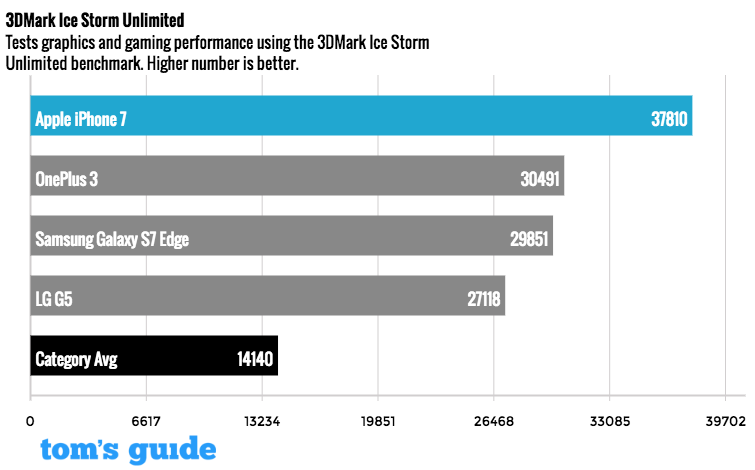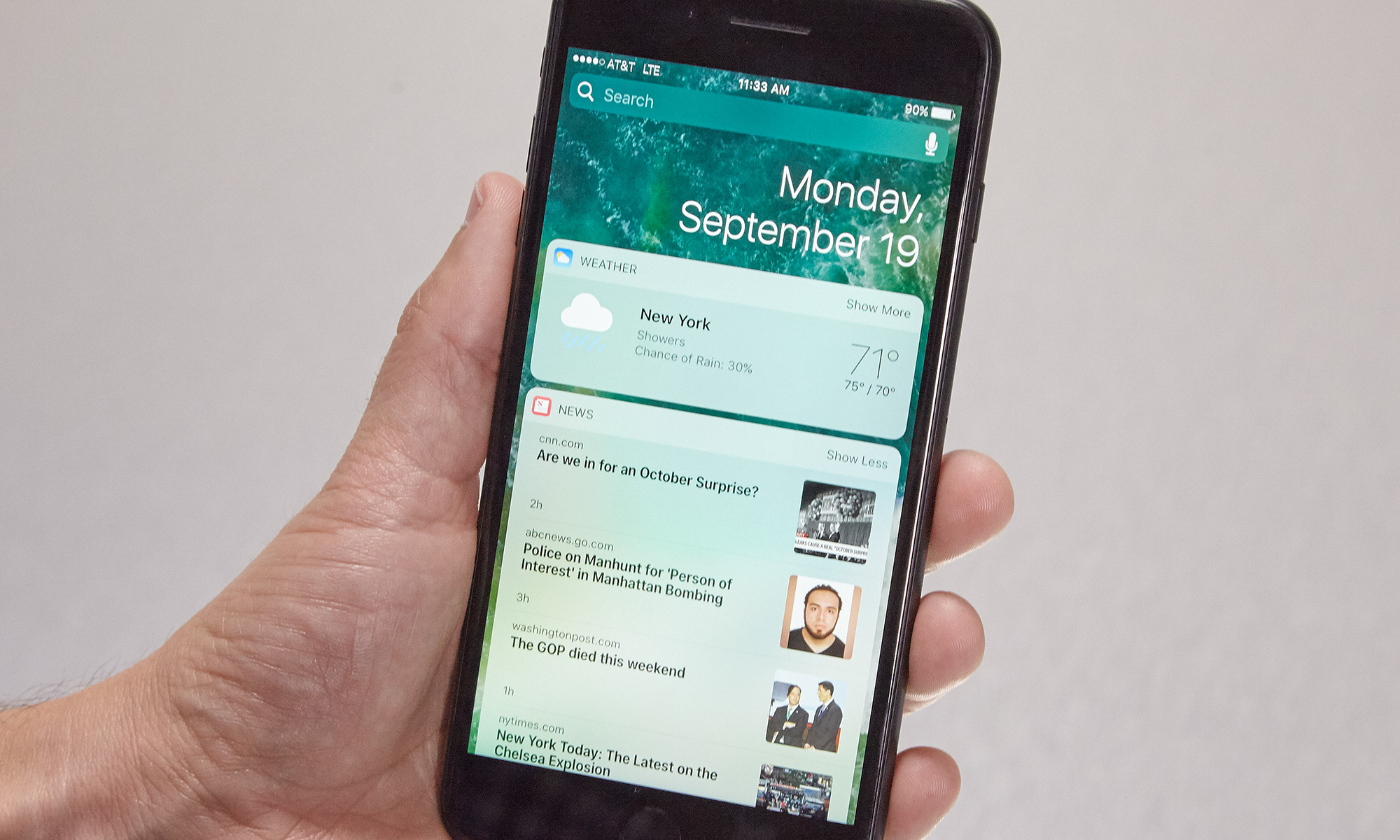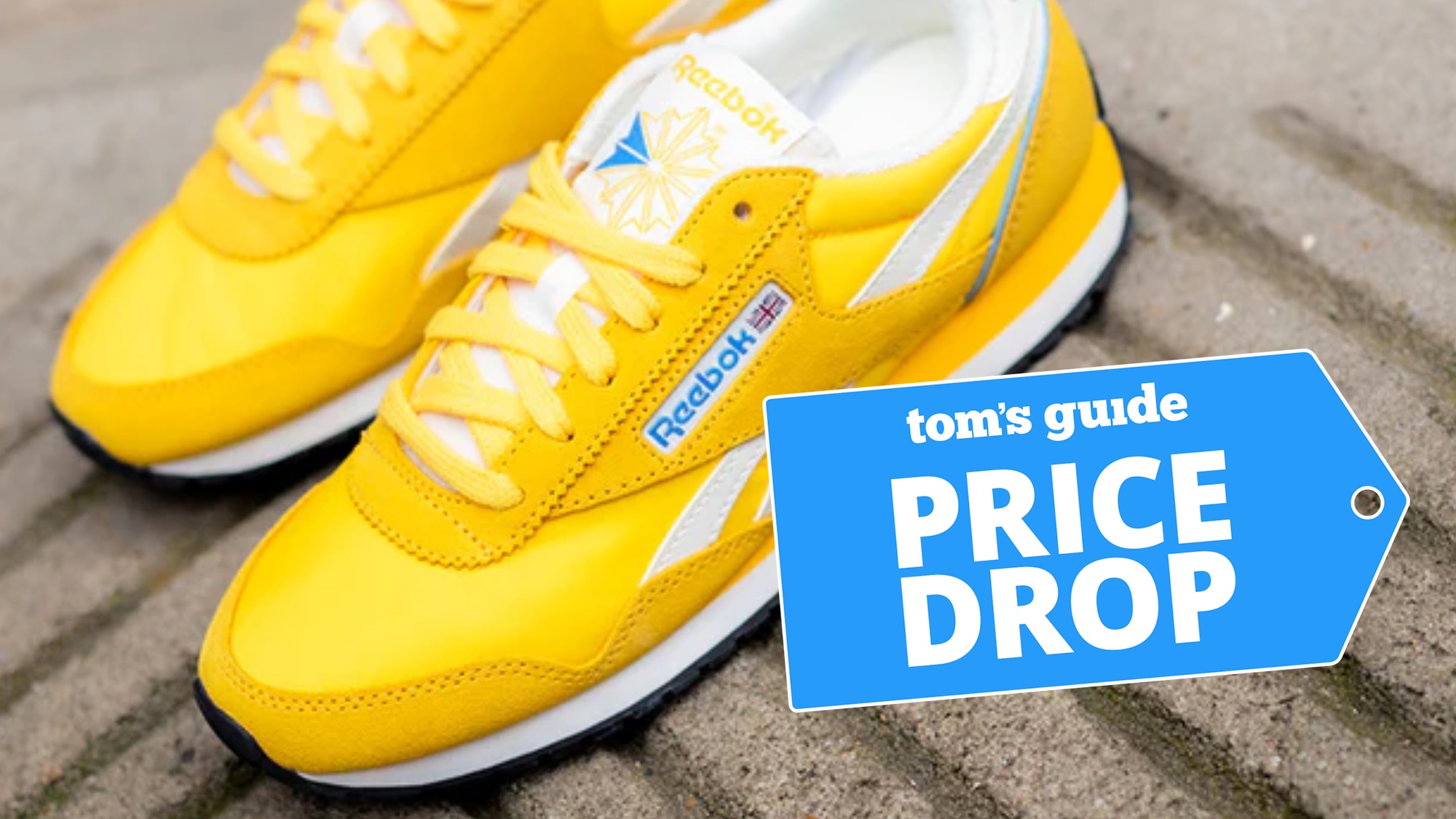Tom's Guide Verdict
The iPhone 7 and iPhone 7 Plus are getting older, but they're worth considering if you want an iPhone under $400.
Pros
- +
Solid camera, especially dual-lens Plus
- +
Swift performance
- +
Good battery life
- +
Water resistance
- +
Stereo speakers provide better sound
Cons
- -
Too much bezel
- -
Missing headphone jack will annoy some
Why you can trust Tom's Guide
Now that they've been around for a few years, the iPhone 7 and iPhone 7 Plus are no longer sold by Apple directly, but these phones are available through carriers as well retailers as unlocked phones. The iPhone 7 now starts at $349, while the larger iPhone 7 Plus costs $449, making them a good choice for anyone looking for a cheap iPhone.
And for that money, you get pretty solid cameras (especially on the dual-lens iPhone 7 Plus), bright displays, responsive performance for apps and games from Apple's A10 Fusion chip and water-resistant bodies. The battery life is good, too, though the iPhone 7 Plus lasts longer on a charge.
The newer iPhone 8 and iPhone 8 Plus offer better cameras, more storage, faster processing and perks like wireless charging, but those on a tight budget should be satisfied with the iPhone 7 or iPhone 7 Plus.
See our best phones page to see all of our top picks for every budget.
iPhone 7 design and water resistance
With the exception of two new color options, the iPhone 7 and 7 Plus look nearly the same as their predecessors, but at least they can take more abuse.
Apple banished the unsightly antenna bands on the back of the handset, relegating them to the edges. It makes for a cleaner look, but if you want an iPhone that actually looks new, you’ll probably want to skip the Silver, Gold and Rose Gold and opt for the Black or Jet Black option.
The high-gloss Jet Black iPhone 7 I tested is a real head-turner, like a flattened, shiny Darth Vader helmet. The back does show finer scratches and fingerprint smudges more readily than other finishes, so you'll want to pick up a case (go with clear). The regular matte black iPhone 7 Plus I reviewed has a no-nonsense, executive-chic vibe.
I enjoyed — maybe too much — spilling a lot of water on the iPhone 7 and then dunking it in a pitcher.
Thanks to its IP67 water resistance, the iPhone 7 can survive being submerged in 1 meter (or about 3 feet) of water for 30 minutes. That's not quite as good as what Samsung promises for the Galaxy S7 and S7 Edge — 5 feet of water for 30 minutes — but it's better than previous iPhones, which could be done in by an unexpected splash.

I enjoyed — maybe too much — spilling a mug of water on the iPhone 7 and then dunking it in a water pitcher. After wiping off the screen it worked just fine. Just keep in mind that Apple designed this feature not as a party trick but as a way to prevent accidental damage.
Up front, Apple upgraded the display on the 4.7-inch iPhone 7 and 5.5-inch Plus to be up to 25 percent brighter than last year's iPhones, while showing a wider color gamut. A group of reds, yellow, light greens and purple heirloom tomatoes looked more vibrant on the new display versus the iPhone 6s. However, the iPhone 7 doesn't support HDR like the Galaxy Note 7, which delivers more natural colors and higher contrast in services like Amazon Video.

My issue with the iPhone's design is that it doesn't look as fresh or as sexy as the curved Galaxy S7 Edge or Note 7. Just as important, there's more bezel around the iPhone 7's screen, so l had to stretch my thumb farther across the screen on the Plus to reach app icons and type with one hand. The bezel is less of an issue with the smaller 4.7-inch iPhone 7.
Is the missing headphone jack a big deal?
At the risk of sounding like an iApologist, no, it's not. Or at least, it won't be for long.

Wireless is the future, and Apple is clearly trying to push us in that direction with the AirPods and AirPods Pro. And there are several other great options on our best wireless earbuds list.

So what about everyone else who hasn't gone wireless? First, Apple includes EarPods in the box that connect to the iPhone 7's Lightning port (the same you use for charging). They're hard and not very comfortable to wear, but they also deliver pleasingly balanced audio.
MORE: Best Smartphones on the Market Now
Just keep in mind that you can't charge your iPhone and listen at the same time unless you use an accessory like the iPhone Lightning Dock ($49) at your desk or Belkin's Lightning Audio + Charge Rockstar ($39) on the go.

Second, Apple also throws a Lightning-to-3.5mm headphone adapter in the box, which you can just leave attached to your favorite wired headphones. Just don't lose this little sucker; it's $9 to replace.
Speaking of audio, I'm glad Apple added a second speaker on the iPhone 7 and 7 Plus — one speaker is at the top of the phone, while the other is on the bottom. The pulsing beat and vocals on "Don't You Want Me" came through much louder on the newer phone than my iPhone 6.
Good cameras, but the optical zoom on the Plus rules
Both the iPhone 7 and iPhone 7 Plus feature a new 12-megapixel camera that delivers excellent performance in low light — a weakness of the iPhone 6s. There's two reasons for this: a wider f 1/1.8 aperture lets in more light, compared with f 2/2.2 on the previous phones, and Apple finally gave both the 7 and 7 Plus optical image stabilization, which improves exposure while minimizing hand shake. (Previously, only the Plus phones had OIS.)

In a low-light photo I took of some colleagues using both my old iPhone 6 and the iPhone 7 Plus, the latter shot exhibited much less grain when I zoomed in, and colors were more natural-looking. The iPhone 7 and 7 Plus also benefit from a new Quad-LED flash, which is 50 percent brighter than the flash in the iPhone 6s.

Outdoors, the iPhone 7 really shined, such as in this shot of a pink hibiscus flower. When I zoomed in, I could easily make out the veins in the petal and individual drops of water. I also appreciated the new wide color aperture capability in the camera, which faithfully recreated the darker and lime green leaves that surrounded the flower. However, the Galaxy S7 did a slightly better job of also keeping the pistil in focus.

The reason to get the iPhone 7 Plus over the iPhone 7 isn't the bigger screen, but the second telephoto lens that gives you true optical zoom. In the live-camera view on the iPhone 7 Plus, you'll see a 2x button; press it, and you'll be able to get much closer to your subject without the typical digital zoom noise.

A shot I took of the Empire State Building with and without the 2x zoom resulted in completely different photos. It's like cropping without the work, and the close-up looked more dramatic with the late-day sun bouncing off its facade, contrasting against the clear blue sky. You can zoom in even farther from there to 5x or 10x by sliding your thumb on the screen, but it will be digital.

Soon, Apple will release a camera update for the Plus that will add a special Portrait mode for taking photos that leverage the dual-camera setup. You’ll be able to artfully blur the background for a dramatic "bokeh" effect.
The reason to get the iPhone 7 Plus over the iPhone 7 isn't the bigger screen, but the second telephoto lens that gives you true optical zoom.
Apple also graced both the iPhone 7 and 7 Plus with a sharper 7-megapixel front camera, an upgrade over the 5-MP camera in the previous iPhones. The camera did a fine job capturing my weekend stubble, as well as the folds on my gray O'Kelly’s Pub T-shirt. The flash accurately captured my skin tone without blowing out the background.

The new home button feels weird, but it's effective
When trying out the iPhone 7 for the first time, my wife was convinced that the Home button was a real button. "The whole bottom of the phone feels like it's vibrating," she said. That's Apple's Taptic Engine in action, which provides feedback that makes the Home button feel like it's being depressed when it's not.
Then I turned off the iPhone 7 and she tried pressing again. Nothing. My wife called it "sorcery." There's a learning curve, but I'm glad Apple made this move, because you'll no longer have to worry about lint or other gunk getting behind that button.

Plus, because more than just the Home button vibrates, developers can tap into the Taptic Engine to make games and other apps feel more immersive, building on last year's 3D Touch experience. I got a taste of this capability when I played the Zombie Gun Ship shooting game and could feel each shot and explosion. Here's hoping developers give the Taptic Engine more love than 3D Touch got and update their apps.
A new speed champ
We'll get to the benchmark results, but what I appreciate most about the A10 Fusion chip in the iPhone 7 is how much more responsive it makes the iPhone 7 feel versus the iPhone 6. That nagging lag between opening an app and stuff appearing on screen, such as in the Settings menu, is practically gone. Exiting to the home screen is also faster, as is launching the camera, which takes a half second less.
That may not seem like much. Over the course of a day, though, and certainly a couple of years, all of those momentary delays add up.
MORE: Best Cheap Unlocked Smartphones
Apple says that the four-core A10 Fusion processor is the most powerful chip ever in a smartphone, and our test results back that up. On the new Geekbench 4 benchmark, the iPhone 7 notched 5,507, compared with 3,917 for the Galaxy S7. The OnePlus 3 and LG G5 also trailed Apple's flagship.

Those who care about gaming will love the advantage the iPhone 7 has over the competition. The iPhone 7 turned in a score f 37,810 on the 3D Mark Ice Storm Unlimited Test. That demolishes the OnePlus 3 (29,957), Galaxy S7 Edge (27,851) and LG G5 (27,118).

Last but not least, the iPhone 7 also beat the field on the JetStream browser test, which measures JavaScript performance. (Higher numbers are better.) The iPhone 7 hit 169.04 in Safari, compared with the low 50s for the LG G5 and OnePlus 3 and 44 for the Galaxy S7 — all in Chrome.
When it comes to storage, I'm glad that Apple finally stopped ripping people off by starting with just 16GB. Now both the iPhone 7 and 7 Plus offer your choice of 32GB, 128GB and 256GB of storage. Each tier adds $100 to the price tag.
A big endurance boost
You'll have much less of a need to slap a bulky battery case on the iPhone 7 and iPhone 7 Plus. They benefit from bigger batteries than the iPhone 6s and 6s Plus (according to iFixit), and the A10 Fusion chip has two low-power cores that kick in when you don't need intense performance.
The larger iPhone 7 Plus' battery endured for 1.5 hours half longer than the iPhone 7, lasting 10 hours and 35 minutes.
On the Tom's Guide Battery Test, which involved continuous web surfing over AT&T 4G LTE network, the iPhone 7's 1960 mAh battery lasted 9 hours and 3 minutes. That's a huge improvement over last year's iPhone 6s 1715 mAh battery on the same network, which lasted just 6:46. The smartphone average is 8:54, and the Galaxy S7 lasted a slightly less 8:43.

The larger iPhone 7 Plus' 2900 mah battery (up from 2750 mAh on the 6s Plus) endured for 1.5 hours longer than the iPhone 7, lasting 10 hour and 35 minutes. That's longer than the lowly 8:16 from last year's iPhone 6s Plus and it also beats the Galaxy S7 Edge (10:09). However, several Android phones last 11 hours or longer.
MORE: Smartphones with the Longest Battery Life
iOS software
The iPhone 7 and iPhone 7 Plus both support iOS 13, so you can enjoy features like Dark Mode and much-improved Photos app.
Apple’s software makes the iPhone more visually appealing and more open than ever before. For example, the Messages apps lets you share GIFs in your texts, as well as fun visual effects like Fireworks. There’s also lots of new apps that integrate with Messages, including OpenTable for booking restaurant reservations and Square Cash for sending money directly from within the messaging app.

Swiping to the left of the home screen brings up a Today screen that lets you quickly check the weather, news headlines, your next appointment and more. You can customize the order these widgets appear in and download more from the App Store as developers update their apps to take advantage of this iOS 10 feature.

Another highlight is that Siri is now open to apps. For instance, you can ask Apple’s assistant to book you a car via Lyft or Uber or send messages to contacts via LinkedIn with your voice.
Photos gets a welcome makeover in iOS 10, too, serving up curated Memories that consist of your best photos and videos over certain time periods. You can also search for images based on the People in them. And Photos now supports facial recognition, automatically grouping together photos featuring the same people.
There’s a lot more to this update, including proactive suggestions in Maps and when you’re typing, so check out our full iOS 10 review.
Bottom line
I would have liked to see Apple up the screen resolution on its flagship phones and shave away some of the screen bezel to make the Plus more one-hand friendly. But I really don't mind the missing headphone jack because I've already gone wireless. Between the iPhone 7 and iPhone 7 Plus, I'd go with the Plus. You get longer battery life, a bigger screen and a second telephoto lens that lets you get closer to your subjects.
Mark Spoonauer is the global editor in chief of Tom's Guide and has covered technology for over 20 years. In addition to overseeing the direction of Tom's Guide, Mark specializes in covering all things mobile, having reviewed dozens of smartphones and other gadgets. He has spoken at key industry events and appears regularly on TV to discuss the latest trends, including Cheddar, Fox Business and other outlets. Mark was previously editor in chief of Laptop Mag, and his work has appeared in Wired, Popular Science and Inc. Follow him on Twitter at @mspoonauer.
-
" However, the Galaxy S7 did a slightly better job of also keeping the pistil in focus."Reply
Just want to mention that the focal point is set differently in both images.
The Galaxy S7 image is focused on the front flower, while the iPhone 7 image is focused on a point just past the front flower.
In the Galaxy S7 image notice that the rear flower and leaves are out of focus, while the iPhone 7 image shows the rear flower and leaves are in focus.
Please retake these images so that BOTH have the focal pint in the SAME location. This would give us a better, more equal comparison between the two cameras.


